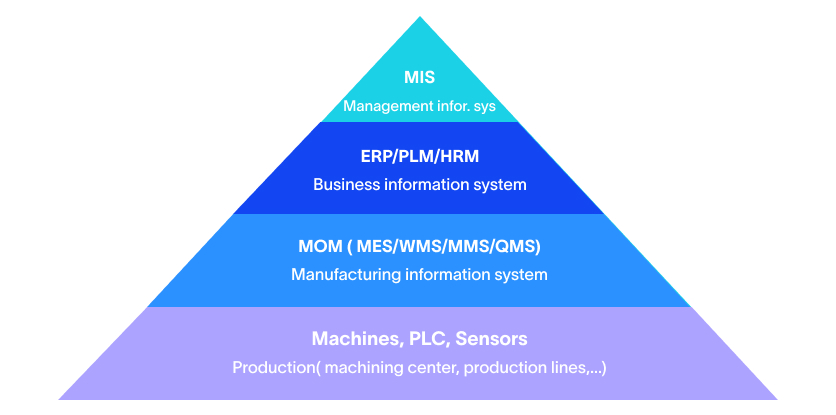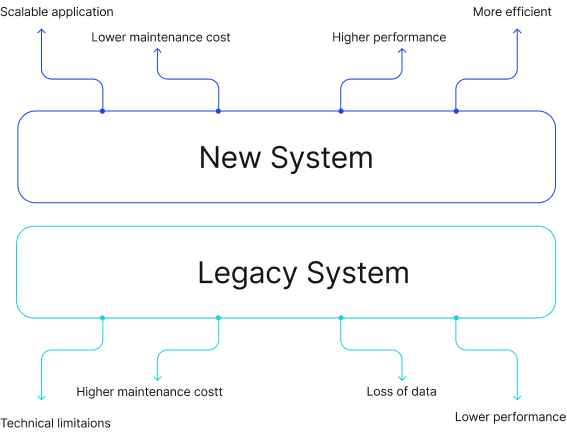How Edge Analytics is Powering the Next Generation of Manufacturing
Blog
6 Min 7 Sec Read
Modern manufacturing facilities create millions of data points almost every second. This could include sensor readings, machine telemetry, quality measurements, environmental conditions.
And for years, manufacturers have sent this data to the cloud for analysis, waiting minutes for insights that could prevent defects or optimize processes.
But when a pharmaceutical tablet press operates at 500 tablets per minute, or an automotive stamping line produces parts every 2 seconds, milliseconds matter for quality control. Waiting isn’t an option. Edge analytics in manufacturing transforms this by processing data locally at the machine level, enabling real-time decisions that prevent quality issues before they occur.
At INS3, we’ve seen how edge analytics creates smart manufacturing solutions that respond at production speed and offers real-time quality control. The future isn’t about collecting data – it’s about acting on insights the moment they’re discovered, where the work happens.
Unlock the Hidden Value in Your Factory Data: Discover how analytics can give you an edge in 2025.
What Is Edge Analytics and Why It's Revolutionary
Edge analytics in manufacturing means analyzing data right where it’s generated – on the machine and the floor. However, if you ship it off to another distant cloud, it might not work out as intended. Let’s learn a little more about it –
The Critical Difference: Speed and Control
While traditional cloud approach is still easier to perform, edge analytics offers more speed and control as a whole. Here’s what you need to know about –
Traditional Cloud Approach
- Path: Data travels from the machine → through the network → to the cloud → gets analyzed → and only then, an action is taken
- Latency: Anywhere from 500 milliseconds to a few seconds – however, in some cases, this time period might get increased
- Bandwidth: Eats up a huge amount of the network capacity
- Dependency: Needs an active internet connection, always
Edge Analytics
- Path: Data processed right at the source (the machine) → local analysis occurs → an action is taken immediately after evaluation
- Latency: Just 5 to 50 milliseconds
- Bandwidth: Cuts over 90% of network traffic
- Autonomy: Doesn’t rely on cloud or connectivity – it just works always
What You Actually Get
- Instant Response: Machines react in real time. Think sub-second correction during high-speed production analytics
- Network Efficiency: Instead of flooding the cloud with raw data, it sends only processed insights
- Stronger Security: Since sensitive data doesn’t leave the site, your risk of exposure goes down massively
- Operational Continuity: Doesn’t rely on the internet, as local system will still function without it
This local-first approach is especially powerful for real-time quality control – when defects need to be caught and addressed instantly. That’s the real promise of edge analytics – faster decisions, fewer delays, and smarter operations.
Use Case #1: Real-Time Quality Control Revolution
Traditional quality control often catches defects too late – after the product’s already built, packed, and sometimes even shipped. With edge analytics in manufacturing, quality assurance isn’t a final checkpoint. It’s built directly into the process.
Ready to Cut Downtime and Boost Efficiency? Discover how data analytics is transforming manufacturing operations.
How Predictive Quality Works
Predictive quality works in three different ways, including –
- Constant Monitoring: High-speed sensors track every critical parameter, such as pressure, dimensions, temperature, etc.
- Instant Decision-Making: Edge devices analyze this flood of data in real time by using machine learning models trained on thousands of examples of good and bad parts
- Immediate Response: Systems either auto-correct on the fly or flag an issue before a single defective product slips through
Real-World Examples
- Pharmaceuticals: Vision systems on tablet presses inspect every single table in under 10 milliseconds. If there’s a problem – maybe the weight or the size is off – the machine adjusts the compression force immediately.
- Food Processing: Edge computing in factories ensures packaging lines verify seals, labels, and fill levels on the spot. If something is off, the system fixes it before a compromised batch rolls out.
- Metal Fabrication: CNC machines track tool wear and surface finish constantly. As conditions change, cutting parameters are fine-tuned mid-run to keep the product quality rock solid.
Measurable Results
- Prevent, Don’t Just Detect: Catch issues before they become defects.
- Near Zero Defects: Micro-adjustments during production mean consistency from part one to part 10,000.
- Minimal Waste: When you don’t make mistakes, you don’t need to rework or scrap.
- Reduced Costs: Fewer rejects, fewer returns, and less rework – all without slowing down the work.
These kinds of smart manufacturing solutions redefine what’s possible on the production floor. It’s not just better quality – it’s a smarter way of working.
Use Case #2: High-Speed Production Analytics
In high-volume manufacturing, even milliseconds matter. Traditional analytics often slow things down, clogging networks and introducing lags. But edge analytics in manufacturing flips that script—handling massive data flows right where they happen, without dragging everything through the cloud.
Where It’s Critical
- Bottling Lines: When you’re pushing over 1,000 bottles a minute, there’s no time for lag. Edge systems check fill levels, cap torque, and label placement – all in real time. No bottlenecks, no buffering.
- Electronics Assembly: Pick-and-place machines placing 50,000 components per hour? Edge analytics verifies every placement and solder joint right after it happens.
- Automotive Stamping: Edge-based monitoring of forming force and part dimensions catches die wear within the cycle itself – before it causes scrap.
Enterprise Integration That Actually Works
Edge doesn’t operate in a vacuum. It fits in – seamlessly:
- SCADA Systems: Feed real-time insights into existing visualizations
- MES Platforms: Add production context to edge-driven decisions
- Cloud Analytics: Push only the essential summaries for long-term trend analysis
What You Get
- Sub-Second Reactions: Adjustments are made mid-cycle—production doesn’t skip a beat
- 95% Less Network Load: Only the meaningful data gets sent upstream
- Uninterrupted Operation: Systems stay smart even when the network’s not
This is what industrial automation and analytics should look like: fast, responsive, and built for the floor, not the boardroom.
Why Edge Analytics Is Essential for Industrial Automation
Today’s factories aren’t just automated—they’re expected to be intelligent, fast, and adaptive. That’s where edge analytics in manufacturing plays a critical role.
Unlike traditional systems that react after something goes wrong, edge analytics enables machines to make informed decisions in real time – while things are still running. It turns conventional automation into a predictive, self-improving process.
Lead with Insight, Not Guesswork: Explore how predictive analytics transforms industrial efficiency.
Key Capabilities
- Autonomous Optimization: Machines self-adjust – no human in the loop – to fine-tune performance based on live production data.
- Predictive Maintenance: Systems track vibration, heat, and acoustic signals to catch failures before they become costly breakdowns.
- Adaptive Quality Control: Quality isn’t static. Systems adjust thresholds in response to environmental shifts or raw material changes.
- Instant Anomaly Handling: Reacting in milliseconds, edge systems stop errors before they spread – sometimes even before they fully form.
INS3's Edge Analytics Implementation
At INS3, our focus with edge analytics isn’t just on deploying flashy tech or making the process look cooler. It’s about getting results that matter.
We implement solutions that blend into your existing systems without disrupting operations, while steadily unlocking measurable improvements across production.
Smarter Operations Start with Analytics: Find out how top managers are optimizing performance through data.
Our Implementation Stack
- Edge Hardware: Rugged, industrial-grade computing units running real-time OS
- Protocols: MQTT, OPC UA, plus full industrial communication support
- Analytics Layer: Real-time data crunching, ML inference, and process control models
- System Integration: Secure pipelines that link insights directly to enterprise systems
Our Proven 3-Phase Methodology
Phase 1: Assessment (Months 1–2)
- We begin by pinpointing high-impact use cases for edge analytics.
- Then, pilot systems are deployed on critical process points.
- We measure improvement and ROI right from the start.
Unlock Hidden Efficiencies: See how manufacturers use data to drive smarter decisions.
Phase 2: Expansion (Months 3–4)
- The next step is scaling. We take what worked and apply it to other production lines.
- At this stage, integration with SCADA, MES, and ERP systems is prioritized.
- Internal teams also receive training, along with a governance framework for long-term success.
Phase 3: Enterprise Integration (Months 5–6)
- Edge-generated insights are connected directly to enterprise platforms.
- Predictive maintenance programs are launched.
- Continuous improvement cycles become an embedded part of operations.
Client Success:
They had a nagging problem—quality checks happened way too late, 45 seconds after the injection molding cycle. That was costly.
We implemented edge analytics in manufacturing to track process parameters right during the 3-second injection phase. The result?
- 99.7% quality improvement
- 94% fewer defective parts
This case perfectly highlights the value of real-time quality control and how high-speed production analytics can drastically reshape output, even in mature environments.
The Technology Behind the Edge
Essential Components
- Industrial Hardware: Rugged devices built for the floor – real-time processing baked in
- Analytics Software: From stream processing to ML inference, and time-series databases that actually scale
- Communication: MQTT for lightweight messaging, OPC UA when security’s non-negotiable, and TSN to ensure everything is in sync – always
Common Concerns Addressed:
- Security: Encrypted by default, with isolated networks that prevent cross-contamination
- Integration: No rip-and-replace here—just structured, proven approaches that work
- Skills: You don’t need an army of data scientists. We train, support, and walk with your team every step of the way
- ROI: Focused on what matters—less waste, better uptime, and quality you can actually measure
Smarter, Faster Manufacturing from the Edge
With edge analytics in manufacturing, you’re not waiting for reports after the fact. You are acting in the moment – right when it count. This shift from reactive to predictive changes everything. With it, now you can –
- Catch issues before they become defective products
- Adjust on the fly as conditions change – yes, in real time
- Cut down on waste through instant feedback and tighter controls
- Predict when machines need maintenance, long before failure hits
- Let systems self-optimize – less manual intervention, more efficiency
The best factories aren’t just connected – they’re thinking. Real-time quality control happens where the data originates, and decisions are made on the spot.
This is where high-speed production analytics come in and turn raw machine data into insights quickly. At INS3, we deliver practical, edge-ready solutions that fit right into your existing setup. This, in turn, can lift your performance, profitability, and overall efficiency massively without any disruption.
So, if you want to move your organization into a more modern setting and integrate edge analytics in it, INS3 can be an ideal partner for you. Contact us today!

Agile MES: The Key to Unlocking Smart Manufacturing Success
MES is a computerized system used in manufacturing operations to track and document the transformation of raw materials into finished goods. An MES system typically manages and monitors work orders, equipment, materials, and personnel on the shop floor. The system provides real-time visibility into production processes, helps optimize manufacturing operations, and improves the overall efficiency of the manufacturing process.

Understanding OEE: The Key to Manufacturing Efficiency
In today’s competitive manufacturing landscape, improving efficiency and productivity is crucial for businesses to remain competitive. One of the key metrics used to measure manufacturing efficiency is OEE or Overall Equipment Effectiveness. In this blog, we will take a closer look at OEE and its importance in manufacturing.

How to Effectively Conduct a Legacy System Integration
Legacy system integration can be a daunting task, but it’s a necessary one for many manufacturers that rely on outdated systems to run their business. Integrating legacy systems with modern technology can improve efficiency, streamline processes, and save time and money. However, it’s important to approach the integration process carefully and methodically to ensure success.
Share on :
Keep On Reading
Subscribe to Our Newsletter
Subscribe to our weekly newsletters to get updates regarding our new production, behind the scene process of our art creation and much more.
After submitting this form you will receive an e-mail with a confirmation link that you must click to complete your request. Detailed information on processing and cancellation can be found in our privacy policy.

